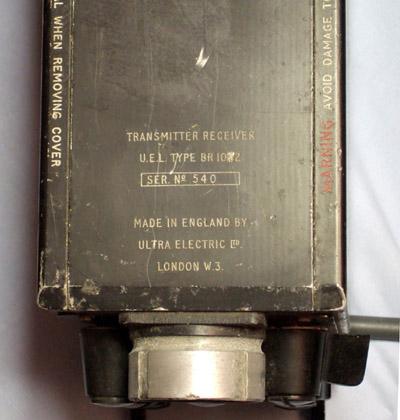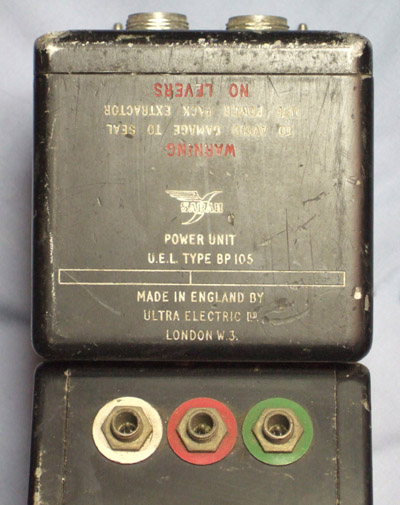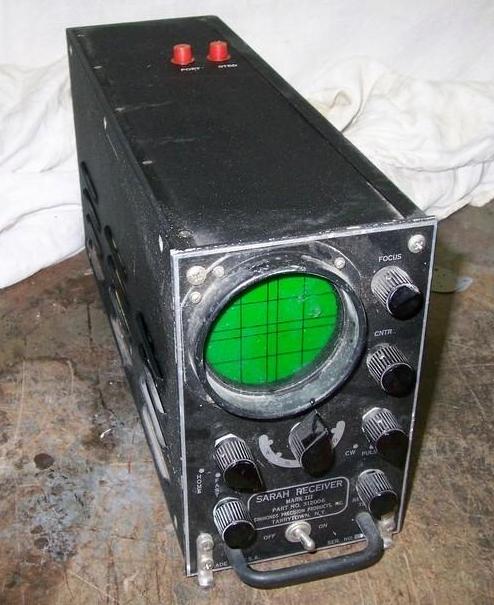SARAH (Search And Rescue And Homing)
is an air-sea rescue system. This enhanced extract from the Science section
of the May 25, 1953 edition of Time Magazine, summarizes the system operation.
"During the Battle of Britain, when airmen parachuted by the dozens
into the choppy waters of the English Channel, the R.A.F. was never quite
satisfied with its, search and rescue gear. The keenest eyes and the most
sensitive radars often missed the tiny, bobbing targets made by helmeted
heads and yellow Mae West jackets.
Last week, more than a dozen years after the R.A.F.'s heroic tangle
with the Luftwaffe, Ultra Electric Ltd.. a London television manufacturer,
announced that its engineers have finally built a reliable device for finding
downed flyers. For more than 200 NATO delegates at the Royal Aircraft Establishment
at the Farnborough Air Show,.
Ultra demonstrated SARAH, a tiny (42-oz.) transmitter-receiver which
was small enough to be attached to a Mae West.
Downed pilots need only pull a ring to release a coiled, 31-in. antenna,
and the little, battery-powered transceiver automatically transmits distress
signals on 243 MHz. Pulses are transmitted at a rate of 210 pairs per second
with the spacing between the pulses in each pair determined by the
coding unit. This allows the beacon signals to be distinguished from each
other.
Search planes as high as 10,000 ft. and as far away as 66 miles can
pick up the signals on a pair of antennas. Matched like radar pips on the
face of a cathode-ray tube, the signal from each antenna is the same height
when the plane is headed directly toward the target. Directly over the
target, both pips disappear. Then, the downed pilot switches to voice communication
for final instructions to his rescuers.



